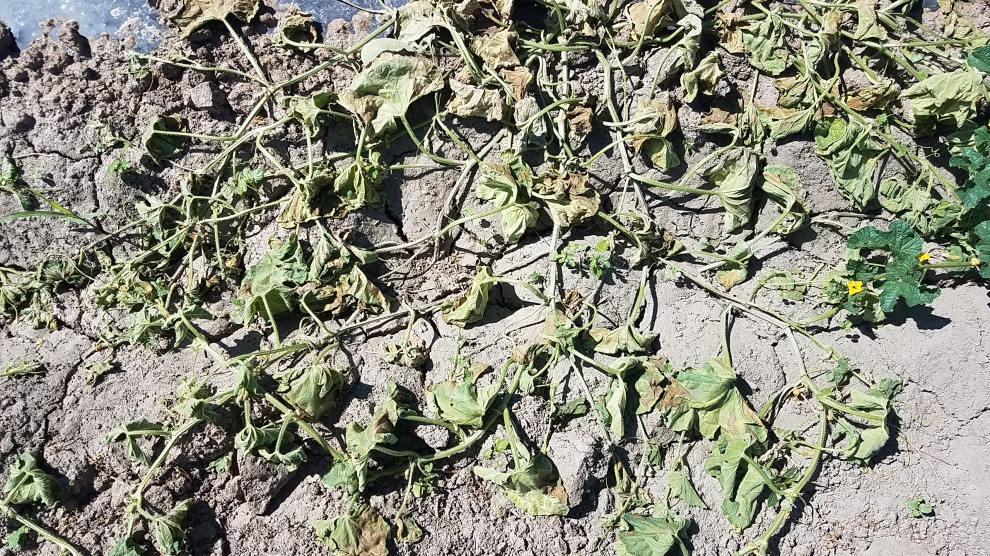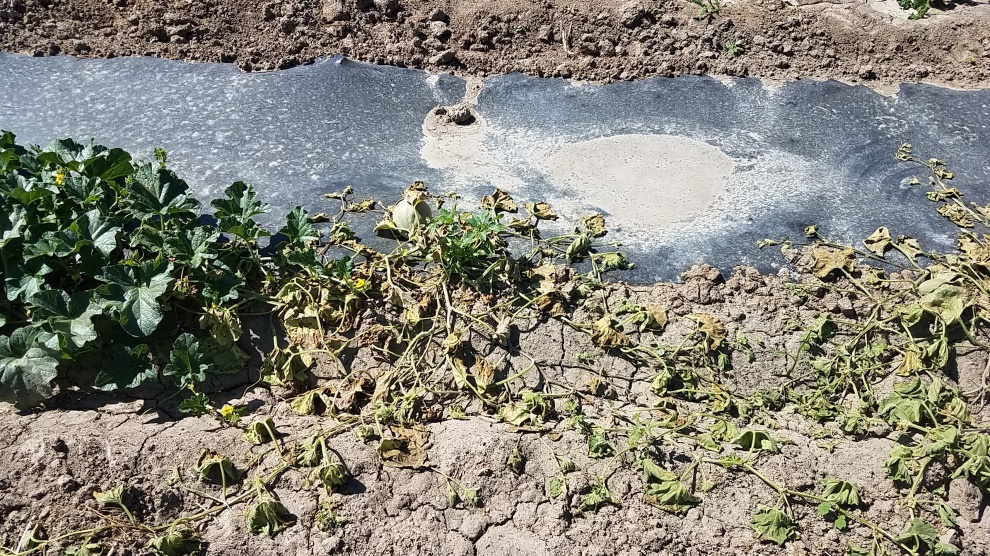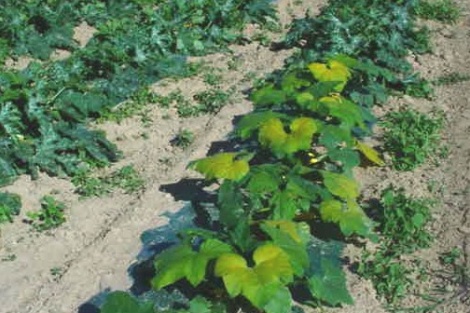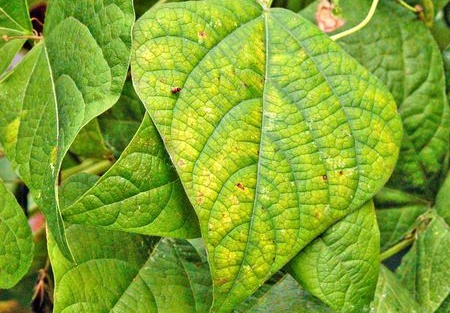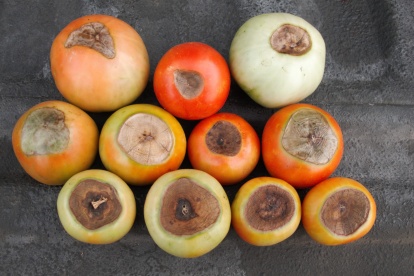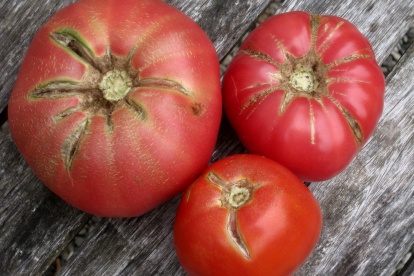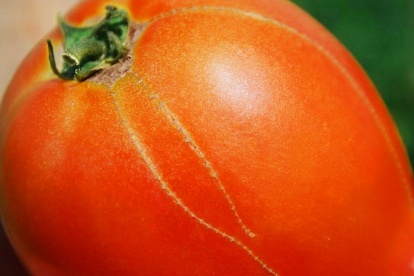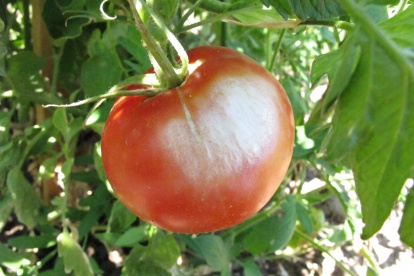In this issue:
- Fusarium Wilt in Cucurbits: Killing off plants at random
- Iron Chlorosis: Turning foliage yellow
- Abiotic Problems in Tomatoes: Why aren’t my tomatoes perfect?
Fusarium Wilt in Cucurbits
Overview
This disease has been reported widespread throughout Utah. Primarily in cantaloupe and occasionally in pumpkin, squash, and watermelon production. Fusarium wilt is caused by the ‘formae speciales’ of the Fusarium oxysporum fungus and is both soil and seed-borne. The infection occurs when the fungi infects the roots of the host plants. It overwinters as resting spores called chlamydospores. This pathogen is highly specific, each ‘forma speciales’ is specific to one crop.
Symptoms
Plants affected by fusarium wilt will display wilt, chlorosis, and red/purple discoloration amongst the leaves or stems. Plants will also experience distorted growth, necrosis, along with reduced seed production.
Management
– Plant resistant varieties when they’re available.
– Be sure to source disease-free certified seed.
– Clean equipment and shoes from the attached soil.
– Plant on raised beds for better water drainage.
– There are no chemical controls for fusarium wilt.
Additional Resources
Fusarium Wilt in Cantaloupe (California IPM)
Fusarium Disease of Cucurbits (Cornell/New York Extension)
Fusarium Wilt of Watermelon (North Carolina Extension)
Iron Chlorosis
Overview
Iron chlorosis (an iron deficiency) can affect many desirable landscape and crop plants that grow in Utah. Iron deficient plants will display bright yellow foliage in between the veins of leaves. The yellow leaves indicate a lack of chlorophyll which can ultimately reduce plant growth and vigor. Vegetable plants experiencing iron chlorosis often produce smaller low-quality fruits. Iron unavailability occurs in soil that is alkaline (pH > 7.0) and may contain high levels of lime. (Conditions common in Utah).
Management
Managing iron chlorosis is expensive and difficult. Therefore, the best method is to select cultivars that are tolerant of high soil pH.
Additional Resources
Iron Chlorosis (Utah Pests IPM)
Managing Iron Chlorosis in Four Steps (Logan – Herald Journal News)
Control of Iron Chlorosis in Ornamental and Crop Plants (USU Fact Sheet)
Tomato Abiotic Problems
When out harvesting your tomatoes you may notice several physical damages These may be attributed to environmental stress conditions and NOT insects or diseases.
Tomato radial cracking is when the large cracks form from the stem scar. This occurs in both green and ripe tomatoes. Cracking can leave fruits susceptible to various pathogens or insect damage. This is best prevented by even and consistent watering.
Sunscald occurs when a tomato fruit is directly exposed to sunlight for a long period of time. This allows for white leathery patches to form and dry out the tomato skin. This is best managed by ensuring healthy foliage to shade your plants.
Blossom end rot is a condition where black/dark leathery spots develop at the bottom of the tomato fruit. This is caused by infrequent watering which prevents the movement of calcium molecules throughout the fruit. This is best prevented by even and consistent watering.
Zippering is caused when the flower anther sticks to the fruit during this development. This eventually creates a long thing longitudinal scar extending down along the fruit. Zippering is most likely to occur during the cool weather.
Additional Resources
Tomatoes (USU Fact Sheet)
Tomato Zippering (Cornell/New York Extension)
Sunscald on Vegetables (Maryland Extension)

